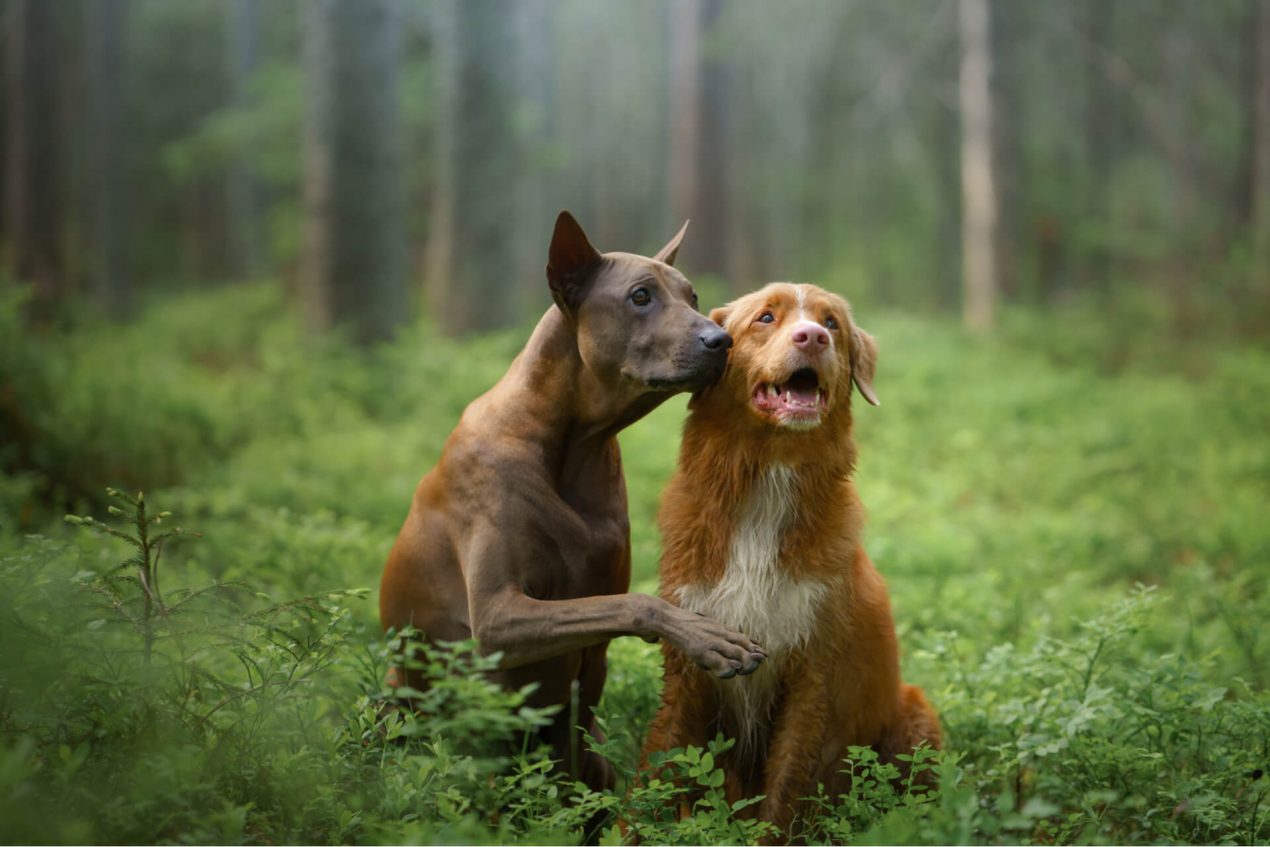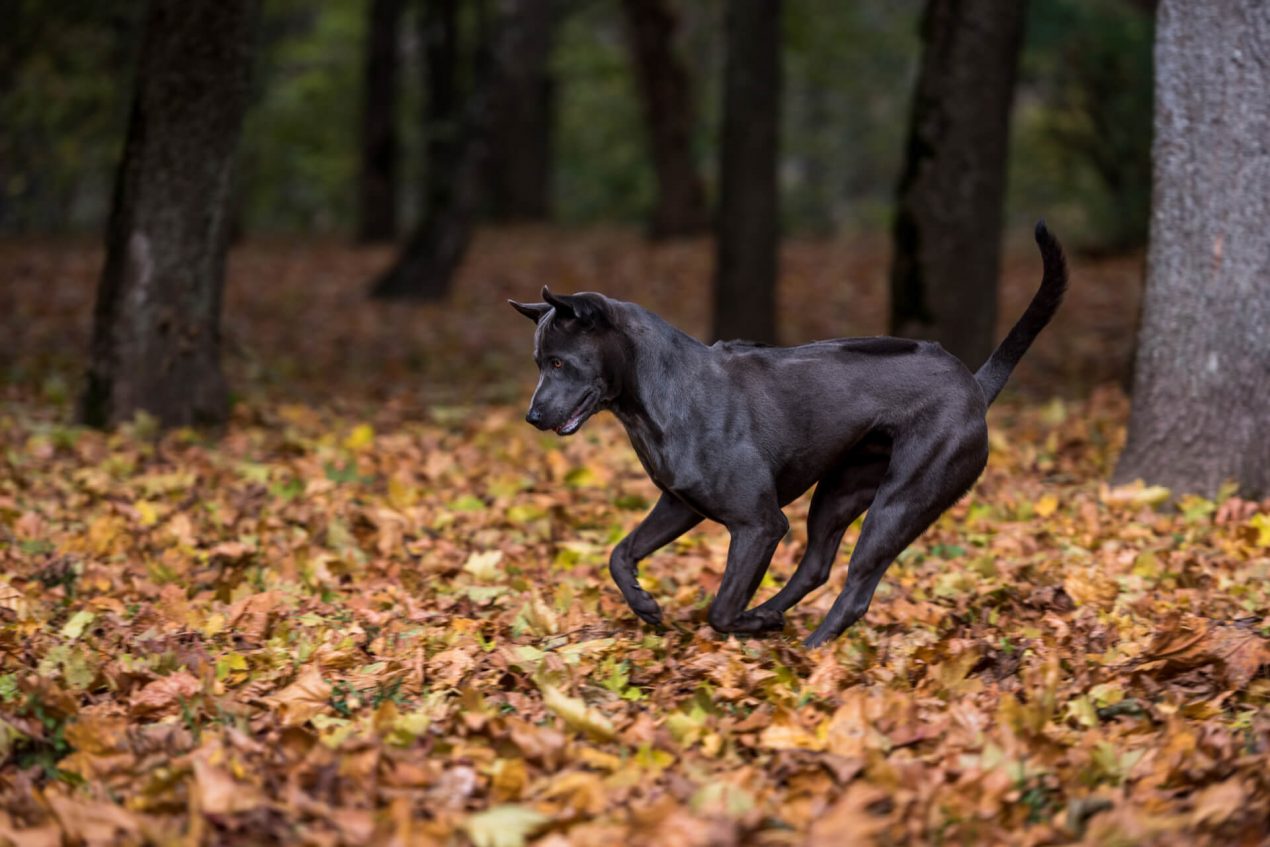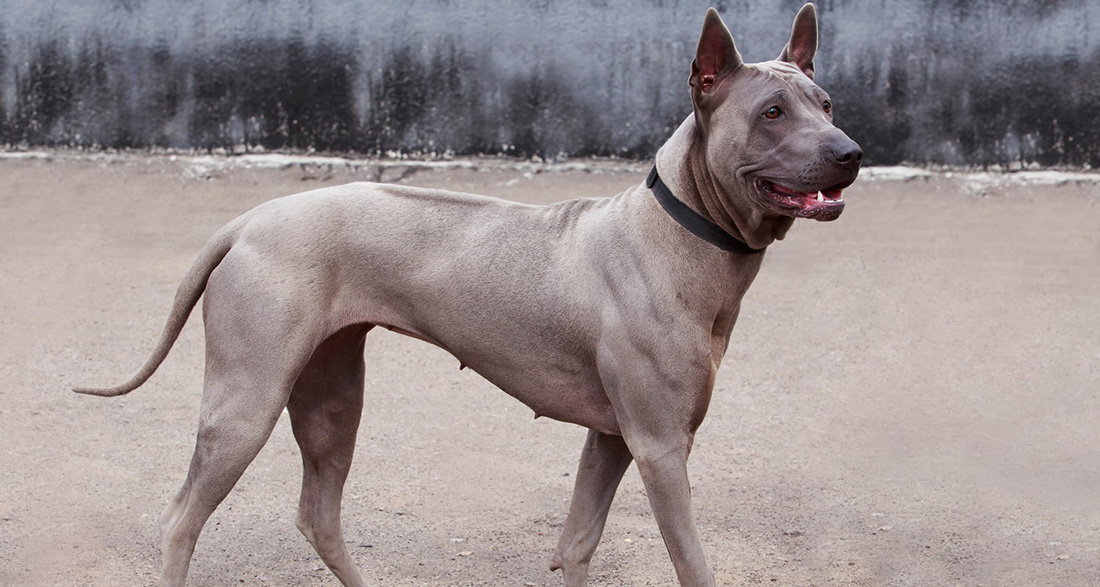The Thai Ridgeback traditionally belongs to the category of hunting and guard dogs. These medium-sized dogs from Thailand, however, possess not only a sharp hunting instinct but also a highly affectionate and intelligent nature. Discover more about the characteristics of these muscular dogs and what to consider in terms of care and training in this article.
History of the Thai Ridgeback
There is limited information about the exact origin of the Thai Ridgeback. It is believed to descend from Thai Pariah dogs. Although these dogs lived near humans, they were somewhat independent, originally gaining access to human settlements mainly to scavenge for food scraps. Over time, closer bonds formed, and Thais utilized these medium-sized, agile quadrupeds primarily for hunting, as well as for guarding homes and properties.
The fearless and majestic Thai Ridgebacks also excelled as companion dogs for carts and riders. The breed was officially recognized much later, in 2003. Before that, the Japanese Kennel Club had actively pursued recognition since 1990.
Breed Overview
GROUP: Hound
HEIGHT: 20 to 24 inches
WEIGHT: Males: 50 to 60 pounds; Females: 35 to 55 pounds
TEMPERAMENT: Intelligent, loyal, independent, bold, protective
COAT: Short and smooth
COAT COLOR: Black, blue, fawn, or red
HYPOALLERGENIC: No
LIFE SPAN: 12-15 years
Temperament and Character
The Thai Ridgeback is considered one of the most primitive dog breeds globally. Due to the isolation of its country of origin, few other breeds were crossbred, resulting in a distinctly clear and firm character for this breed. Members of this breed are intelligent, robust, and known for their courage and loyalty, along with a certain stubbornness. This dog serves with its entire being those it trusts, but the owner must diligently earn this trust and maintain close contact with the dog to avoid losing that trust and recognition as the leader.
Due to its history, the Thai Ridgeback has a pronounced hunting instinct, having been used as a hunting dog for many centuries. Therefore, allowing it to run off-leash requires some effort.
The protective instinct is also well-developed due to its past role as a guard dog. Many Thai Ridgebacks inherently possess a natural mistrust of strangers. Proper socialization from a young age is crucial for the attentive canine to accept visitors and guests in “its” territory without becoming nervous.
Otherwise, these large dogs make ideal companions, even for families with children. However, careful supervision is essential to intervene if either the child or the dog becomes overwhelmed. The Thai Ridgeback is an energetic dog that enjoys being outdoors and is not suitable for sedentary households. With active and consistent owners, along with love, it can lead a very happy dog life.
| Affection Level | Medium |
| Friendliness | Medium |
| Kid-Friendly | Medium |
| Pet-Friendly | Medium |
| Exercise Needs | Medium |
| Playfulness | Medium |
| Energy Level | High |
| Trainability | High |
| Intelligence | High |
| Tendency to Bark | Low |
| Amount of Shedding | Low |
Acquiring a Thai Ridgeback
As with all breeds, focus on finding a reputable breeder! Since there are few members of this breed, carefully study the pedigree—avoiding inbreeding is crucial. If the same name appears twice, it is advisable to refrain from purchasing the puppies for the sake of the new owner, the breeder, and the dog.

Extra caution is warranted due to the limited gene pool: the parent animals must have been thoroughly examined for hereditary diseases before being allowed for breeding. Additionally, they should appear fit, lively, and approachable. A trustworthy breeder should be able to show the mother at any time without requiring significant preparation.
The environment should be clean and orderly. The breeder should not only be medically knowledgeable but also properly and empathetically imprint the puppies from the beginning. This means exposing them to everyday situations from a young age to prevent future issues. For a dog with a pronounced guard instinct, like the Thai Ridgeback, this includes getting the puppies accustomed to strangers, crowds at events or in city centers, and visitors in their home. Given that the Thai Ridgeback is an extremely rare breed, the search for an appropriate breeder should begin very early, as litters of this breed are infrequent.
What to Consider When Buying
In addition to selecting the right breeder and assessing the medical and character suitability of the parent animals, it is crucial to check whether the Thai Ridgeback is genuinely suitable before buying. Does the prospective owner genuinely have the time (and desire) to engage with the dog for several hours every day? Are there sufficient knowledge and experience in dog training?
The Thai Ridgeback is definitely not a dog for beginners! With its stubbornness and independence, even experienced dog owners are often faced with challenges. Someone who has never owned a dog should perhaps choose a different breed. A dog of this size and strength can cause a lot of harm in the wrong hands, which is not in the best interest of the dog or its environment.
Development and Training of the Puppy
Like all puppies, the Thai Ridgeback is extremely playful, active, and curious as a baby. These characteristics can be used by the owner to build a strong bond, which makes later training somewhat easier.
Speaking of “later training,” the puppy must be trained from the beginning – gently but firmly. With rewards and praise, the sensitive quadruped responds better than with pressure or punishment; otherwise, it may become stubborn and unresponsive, shutting down completely. Physical force is met with resistance, understandable given the size and agility of the dog. Therefore, the use of violence should be avoided. This applies to all dogs, regardless of the breed!
What to Watch For
Before engaging in games or tricks, the new family member must first be taught the essential basic commands. House training is also one of the first things that can and should be playfully practiced and encouraged. Ideally, this begins with the breeder.
Since the Thai Ridgeback is one of the more active breeds, it is also recommended to work extensively on calmness and relaxation with the dog. Too much stimulation can quickly turn it into a bundle of nerves, demanding more and more attention. Owners can easily counteract this with a few simple points: the play is always initiated and ended by the owner.
If the puppy demands it, it is consistently ignored or later sent to its place. A period of rest always follows an active phase of play and learning. The active phase in puppies does not need to be too long; they just need plenty of sleep and rest to process all the exciting impressions. Peace reigns in the retreat – even children must learn to leave the dog alone when it retreats to its crate, bed, or blanket.
How to Care for a Thai Ridgeback
In addition to a nutritionally appropriate and balanced diet and medical care, whether through prevention such as vaccinations, deworming, etc., or for acute illnesses, the Thai Ridgeback requires ample company and activity. Like most dogs, it will not feel comfortable spending most of the day alone in a small apartment – those working full-time should consider whether there is enough time left for the agile quadruped after household and other activities.
The Thai Ridgeback enjoys spending time with its owner – aside from extensive petting sessions, it also appreciates physical activities, search games, and long walks with its owner or family. Due to its intense hunting instincts, owners must always keep a watchful eye. Substitute activities for hunting, such as fetching or professional anti-hunting training, are almost a must for this breed.
Activities with the Thai Ridgeback
The Thai Ridgeback is an active, highly intelligent dog – optimal for almost all dog sports! Thanks to its agility and excellent jumping ability, it often excels in agility exercises. It also performs well in demanding tasks such as mantrailing. Both sports not only require physical strength but also provide mental stimulation for the quadruped.

Health and Care
The Thai Ridgeback is generally a low-maintenance and robust dog. Thanks to its short coat, grooming requires minimal effort. Occasional brief brushing is usually sufficient, and any significant dirt can be easily removed with a damp or wet cloth.
However, due to its rarity and the associated, unfortunately still prevalent inbreeding, the Thai Ridgeback is occasionally affected by hereditary diseases and genetic defects. Dogs with the color blue are particularly prone to deafness and blindness. Therefore, it’s advisable to avoid purchasing a puppy with this coat color. The distinctive ridge, the fur strip growing in the opposite direction to the prevailing growth on the back, is intentionally caused by an inheritable genetic defect that, in rare cases, can lead to conditions like Dermoid Sinus.
Interesting and Worth Knowing
In the Swiss canton of Geneva, the handsome canine is listed among the potentially dangerous breeds; keeping it there is either not possible or allowed only under strict conditions. There has been no proven relationship between the Thai Ridgeback and the second breed with a stripe on its back, the Rhodesian Ridgeback.
Do you have a Thai Ridgeback or plan to get one soon? Share more with me in the comments!


